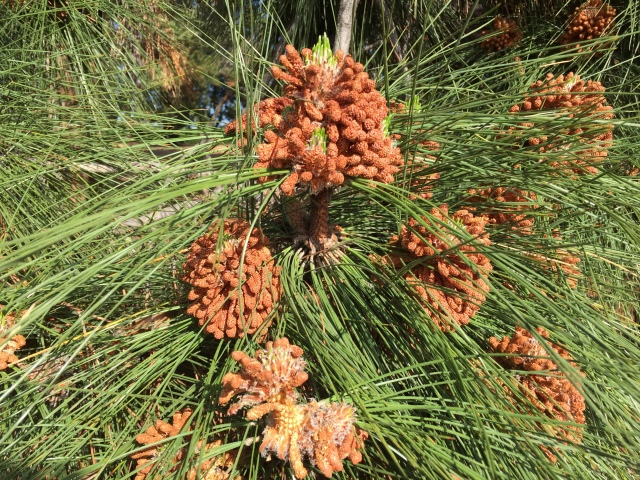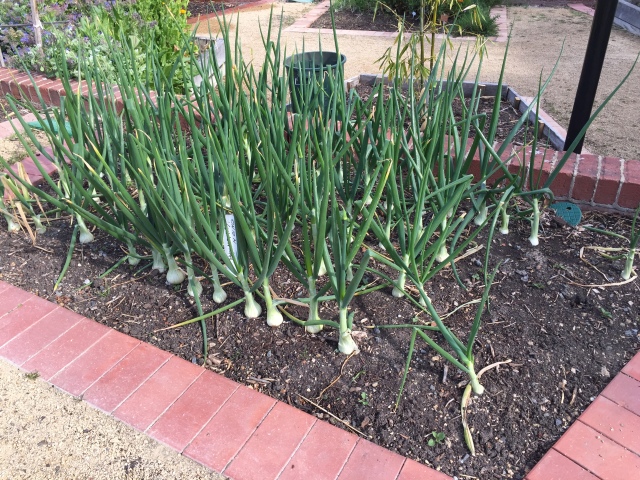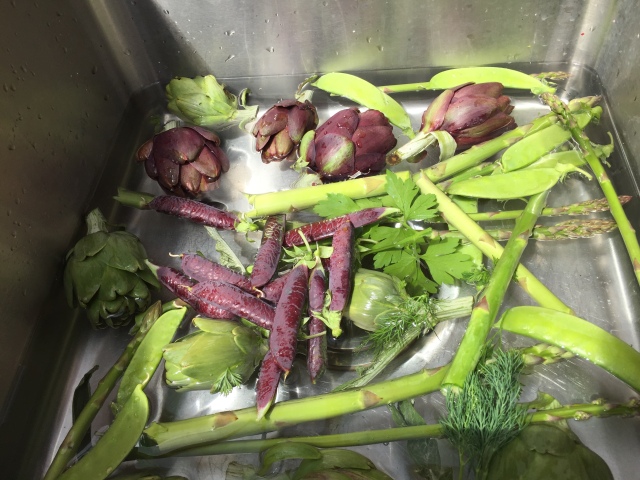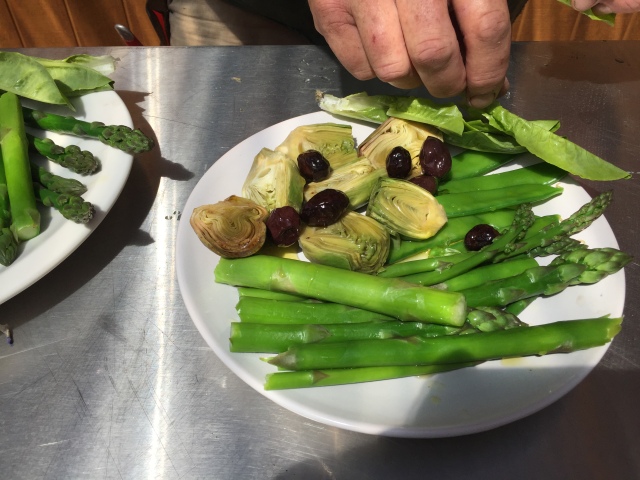When I thought of pine cones, the image which came to mind was of large heavy seed free pods that litter the ground at certain times of the year and then get scooped up for Christmas wreath creations. Once upon a time the fashion was to spray them with silver or gold paint or smother them with glitter. Now I realise the pine cones, as I once knew them, are only part of their story.
On my way to the Food Garden, I walked from the bus stop at the bottom of the hill with Government House perched on the top, and passed a few pine trees. These days I look more intently at all plants. I see the details of their fruits, nuts, leaves, barks and flowers much more clearly and with more interest and excitement than in my pre Royal Tasmania Botanical Gardens (RTBG) days. In looking closely at these pine trees I noticed that every age of birth, growth and death of pine cones was present on a tree at the one time.




My new watchfulness can in part be attributed to my university studies in the units of Science of Gardening 1 and 2, to the casually offered but excellent knowledge and experience of Adam the Food Garden’s Coordinator, and possibly even more so to the enthusiasm and focus of my fellow volunteers. Collectively we keep noticing changes in plants and we are amazed and fascinated and inspired to learn more.
Once at the RTBG, I passed through an archway in the convict built wall and immediately spotted tall spikes of healthy asparagus.
I passed the drama of large artichoke plants, and the regularity of a patch of onions getting close to being pulled. 


I walked around to look at the finished gabion wall. What a marvel of construction. A curved wall now beautifully filled with rock. Very handsome. Slowly but surely this area is taking shape.
I was directed to help clear the weeds that were infesting the long garlic patch. The soil was moist and the roots of the weeds came clearly away without effort. I soon realised that many of the plants were not really weeds; self-seeded potatoes, tomatoes, feverfew and more had established themselves. However, their life was short lived that day; they all had to go in order for the garlic bulbs not to be competing for food from these invaders. 


Later S introduced me to the seeds of the white flowering borage plant; a star for bees. They were difficult to find and to gather. Inside dead flowers were spheres that appeared to be seeds but these weren’t and only occasionally could we find a set of 2-4 very small actual seeds. I found two and have brought them home with the plan to plant and see if they germinate; of course what I have may or may not be seed. We puzzled about this; here was a plant that self-seeds easily, by all accounts, yet we had trouble locating and extracting the seeds.
Elsewhere much weeding continued and some planting. 

I was alerted to the flower balls on the kiwi plants. 


Then as the temperature reached 30 degrees or more, lunch time was called. Coordinator Adam felt a treat was in order. He knew I had missed the steaming of artichokes previously and was determined to steam some more. Yes please!
Off he went to gather more garden produce and returned with artichokes, asparagus, parsley, lettuce leaves, dill, snow peas, peas in purple pods and a few limes. Adam brought out his jar of two-year aged olives. 



The fresh produce was given a rinse in the sink. Then as I watched, he cut the smallest green and black artichokes (two different plants). At the courtyard bench he cut across the top edge and removed those leaf parts. Then he peeled off the outer tougher layers and trimmed the stalk end, before cutting each artichoke in half lengthwise. Once all were peeled and cut, a squeeze of lime across stopped any browning from oxidisation. Adam arranged the artichokes, trimmed asparagus and snow peas in a steamer which fitted perfectly into the top of an urn. He steamed them for around 5 minutes. 






While the urn was steaming, Adam created two platters of a mix of the other gatherings then the steamed artichokes were artfully placed. A visual delight of various greens. R picked a bright nasturtium flower to add to the mix. By now all the volunteers had come under the comparative shade from the searing sun and all admired the platters and salivated in the presence of such wonderful food. 

Over lunch, all these tasty veggies were shared and eaten and we felt like kings. The richness of the comfort of sitting in semi shade, comfortably chatting, looking out over a luscious expanding garden and an intense blue sky, and eating good clean food made our privilege seem all the greater.
I had arrived early in the day in anticipation of a hot afternoon so I left the gardens soon after lunch. A solitary galah roamed the grass as I passed on my way to the bus stop.
Yet again I had experienced a wonderful day of sensory overload and fresh air. Then, when I stepped onto the bus to travel home, I nearly reeled backwards as I took a draught of thick air. The stale synthetic smells of people and their various cosmetic lotions made me feel dirty. I felt it was almost difficult to breathe. The cleanliness of the soil, and the volume of oxygen produced by the plants to help me breathe, cannot be overestimated!

I know what you mean about the synthetic smells: natural fragrances are so much more attractive! 🙂
LikeLike
It was a wall of dead air with stale cheap smells; the contrast with tree fresh air was so dramatic
LikeLike